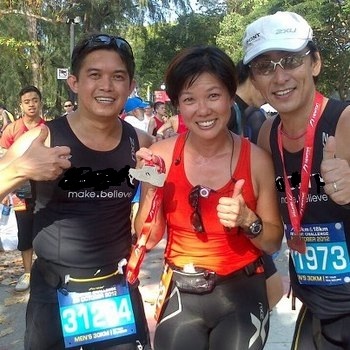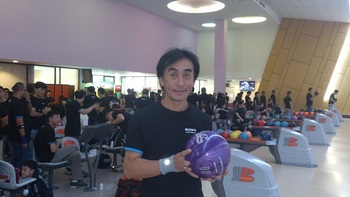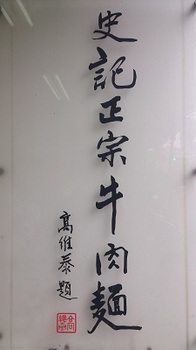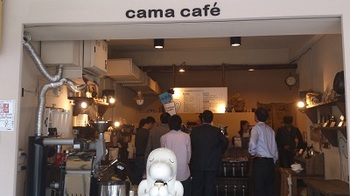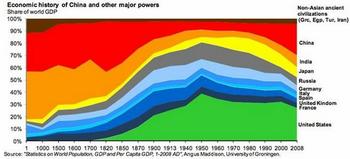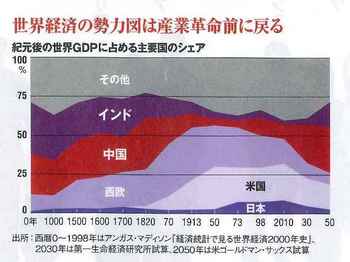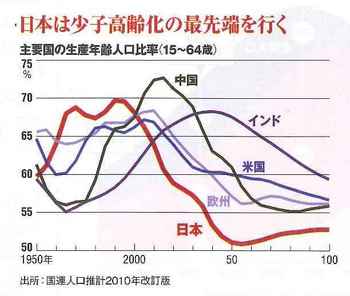Newton Run 2012 (30km) [A1.ランニング]
There is only one month to go for Singaopore Marathon. In order to increase my mileage I participated in Newton Run (30km). Considering my recent practice, 30km run is challenging and it may take three and half hours, however I had no choice.
I decided to run at 6:30/km pace. I could keep to run upto 18km at this pace. But it became 7:20/km from 19km onwards. Then my legs have jammed at the point of 26km and ran at 8:20/km. It ended at 3:32:12.
Though this time was predicted, I have to train more. Otherwise, Singapore Marathon will end up at five and half hours with a little walking, which will not give me a full satisfaction.
Most of the time, point which the legs jam will come in case of the full marathon. If this point comes earlier like before 30km point, it will be very miserable. You have to continue to run or walk more than ten km by your jammed legs like the solders who have lost the war and run away. If it comes after 35km points, you can manage somehow.
So it is important to control this point, ideally after 35km.
I used to run at 5:30/km but recentlly 6:00/km because of the insufficient practice. Even so, it came at 30+km point. I did 6:30/km at the last Tokyo marathon, supprisingly I my legs did not jam.
So I spend this one month to run at 6:00/km. And ideally I should do 20km run two,three times.
If successful, I will able to run within five hours at 6:30/km pace.
Bowling Competition [A4.筋力トレーニング]
I participated the annual Bowling competition (265 staffs participated). The result was not so good as I expected despite of several practices during lunch time. Anyway it was fun and I enjoyed a lot.
Bowling became very popular in US during 1950-60s, in Japan during 1970-80s and in Singapore during 1980-90s. I predict that the next countries where the bowling become popular will be ASEAN countries.
I joined this event every year in 2009(170pax),2010(220pax) and 2011(390pax).
We have other sports events like Futsal,Batminton,Running,Basketball,Table tennis,Swimming and Tennis. I will try to participate all.
Anyway, Newton Run (30km), at 5:30 am tomorrow...
新卒一括採用 [人事1 組織改革]
最近、80年代と違って、日本企業がグローバルでぱっとしないので、いろんな日本流のやり方が問題であるように言われています。「新卒一括採用」もその一つです。「同じような人間を作ってしまい、多様性に欠け、柔軟な考え方、ひいては、イノベーションが生まれない」という論調です。
そもそも、「新卒一括採用」は、戦後の復興で人手不足を補うものとして始まったそうですが、「先輩後輩」「年功序列」「終身雇用」のシステムの中に組み込まれ、高度成長期には、非常によく機能し、海外から80年代のグローバルでの日本の成功の鍵であると絶賛されたものです。
一方、欧米では、一般に「成果主義」が取られていて、必要な人材をその度に採用するという方法が取られ、能力を買われて採用されるそうです。よって、学生時代のインターンは貴重な体験で、企業側も積極的に募集しています。就職後もよりよいキャリアを求めて転職しますし、企業側もいつでも解雇できる状況です。
さて、そこで、どっちがいいのかという話です。「一括採用」のいいところは、効率的に採用ができ、スタートアップの研修も充実させれる、後、これが一番重要ですが、会社へのロイヤリティーを持ってもらうことができるということです。また、同期という概念もでき、お互いに相談し合ったり、いい意味での先輩後輩というのもでき、人事がいろいろと世話をしなくても、社員同士でうまく回るシステムが構築できます。そうすると自ずと離職率も減ります。早期に優秀な人材を育成できるというメリットもあります。高度成長期には、一度に大量の優秀な人材を育てる必要があったので、これが最も適していたのでしょう。
欧米のやり方の場合は、「キャリアは自分でつくるもの」という自覚が本人に目覚め、Comfort Zoneに入りにくいということです。また、いろいろな経験をつんだ人を雇えるのもメリットですね。ただ、離職率は高いし、既経験者を採用するときはコストが高くなるというデメリットもあります。ただ、欧米の会社の中にも、自社内で人を昇進させるというポリシーのある会社もあります。
よって、やはり、ハイブリッドなんでしょうね。全体的には、都度採用するが、毎年、ある一定程度の幹部候補生を一括採用して、システマチックに育成していくということではないでしょうか。そして、従業員のための働きやすい環境の改善を怠らず、離職率を抑えていくというのも必要でしょう。
ゴルフ [A3-a ゴルフ計画・結果]
今日はハーフ終わったところで雨で中止。雨季に突入したのでしょうか。
Sentosa Serapong 57 F2(29%,OB1,B2) B1 P2 Pt24 I 19
Higher Education in Asia [人事1 組織改革]

University entrance ratio is around 50-70% in the east Asia such as Japan(48%), Taiwan(48%) and Korea(83%) and Pacific area such as Australia(63%) and New Zealand(69%). Considering the economic development, it is understandable like other developed countries in the western area.
The countries in the north Africa and Arabian gulf area are focusing on a higher education by using the oil money for a decade showing 20-70% entrance ratio. Ironically "the Arab spring" was led by those university students.
Looking at the south east Asia, the philippines shows the highest ratio as 48% followed by Thailand(35%),Singapore(34%),Malaysia(28%) and HongKong(20%). The ratio has been trippled for two decades due to the strong economic growth.
The current emerging countries such as Indonesia (15%), South Africa(15%),Iran(15%),UAE(12%),India(11%),Vietnam(10%) and China(8%) are producing a massive number of graduates. The most of these countries have a bigger population. The number of the college graduates in 2006 was 3.3 million in China and 3.1 million in India versus 1.3 million in US. The biggest country who can speak English will be China in anoher five years.
The rest of African countries shows still under 5%.
Let's look at the quality of the universities by the world universuty ranking.
The Times Higher Education World University Rankings 2012-2013 powered by Thomson Reuters are the global university performance tables to judge world class universities across all of their core missions - teaching, research, knowledge transfer and international outlook. The top universities rankings employ 13 carefully calibrated performance indicators to provide the most comprehensive and balanced comparisons available, which are trusted by students, academics, university leaders, industry and governments.
According to them, Japan has 2 universities in the top world 100 such as Tokyo(No27) and Kyoto(No50), 6 in Australia, 3 in Korea,2 in Singapore,Hong Kong and China.
Singapore and Hong Kong are small countries but they are focusing on the education very much since the human resource is the only one that they have.
So what can we predict from these data?
The education level will rise in the emerging countries. The people who will have a higher education in these countries will impact on the culture, economy and politics globally.
1 kg 減った [A5.健康メンテナンス]
ここんとこずっと体重が61.5kgと重いまま減らなかったんですね。あまり走ってないから。9月は、10kmとトライアスロンのレースに出たので、多少練習したからでしょうか、ランニング換算でたったの126kmですが、今日体重はかったら60.3kgになってました。ちょっとは効果があったかもしれません。ベストまでは、後2kg落とさないといけませんが、シンガポールマラソンまでには、59.5kgにまではしたいな、、、。
ゴルフ [A3-a ゴルフ計画・結果]
後半パー3つとったんですが、パターがまたダメでした。
Sentosa Tanjong 108 F9(64%,P1,B2) B2 P1 PT46 I42
今年35回目
Strategic Job Rotation [人事4-キャリアプラン]
Normally when some staff resigns, the rotation will happen.
We all know that the job rotation gives a chance to develop the employee. However it is not so easy to design this strategically as the following reasons.
1) The direct bosses , normally deaprtment heads, can rotate the staff within their deaprtment, which has a limitted opportunity.
2) If the direct bosses can't be promoted, the staff has less chance to be their position.
3) The staffs generally feel risky to be assigned in the diffrent department, since they are not sure to peform well or not in the new positions. And they tend to think that it slow their promotion.
4) The bosses can't take care of their staff's career for a long time, since they may not be in the same position.
5) It is difficult for the bosses to deploy the staff in the other department unless they have the right successor who normally can not be found easily.
6) The bosses usually keep the good talent with them.
7) There are no motivation for the bosses to deploy their talents in the other deaprtment for the sake of human development, since this action will not be recognised as a good leader by the company's assesment system.
8) When the bosses want to deploy their talent in the other department, it will not be realised if there are no vacancy.
So it is very difficult to rotate the staff strategically.
What HR deaprtment can support this?
1)To set up the internal job posting plattform for the employees' proactive action.
2)To promote the career talk among the staffs and department/division heads every year for the career discussion.
3)To list up the employees (especially managers) who are keeping the same position for many years (e.g. five years) as the notice for the management.
But,these initiatives may not be sufficient as a strategic rotation.
Senior management should form the startegic job rotation committe to rotate the talent strategically. And the company should take some number of young talents periodically so that this can be a trigger for the rotation.
And we should develop the assesment system to evaluate the bosses who do the strategic staff rotation.
Taipei [B1.旅行・出張]
The last visit to Taiwan was last October. Since Taiwan beef noodle (牛肉麺) is very popular, my colleagues brought us to the famous restaurant for lunch. This is the best beef noodle in Taipei that I have ever taken. Check it up!
This is the Taiwanese style Starbucks which demonstrates the authentic coffee shop atmosphere. I think that the customer service is improving in Taiwan just like in Japan.
Taiwanese have had the positive image to Japan since before and I heard that this is improving on even nowadays. They use Japanese laungage in their TV commercial to apeal the cool image.
Innovation Culture [人事2-コンピテンシー・イノベーション]
We had the general assembly today and I made a speech about "innovation".
=====
Today, I would like to share with you my thoughts on a topic which is close to my heart, that of Innovation.
Many employees in the company often say that our engineers or product planners are not introducing innovative products. However, is innovation only done by the engineers or product planners? So let us now think about innovation.This is my 1st key point for today.
What is Innovation? An innovation can be big or small. It can be brand-new or just a bit different. It can be very complex or very simple; it doesn't matter. An innovation is all about trying new things or doing things in a new way which have not been done before, or applying new ideas and methods to improve upon the current situation and be more efficient.
By the way, no product or service can really be considered as innovative during its incubation period.Whether it is innovative depends very much on the response from the market.
When we try and execute new ideas, there is high possibility of failure and I feel that this is what’s holding many of us back from doing innovation. If you take risk, you may fail but if you do not take risk, there is no innovation.Not all new ideas are good or innovative but that should not stop us from trying. If out of 10 new ideas, 1 is successful, that is a very high ratio. We can also look at failure from the eyes of Thomas Edison who said “I have not failed; I have found 10,000 ways that won’t work”.
So, taking risk is one of the most important criteria for innovation. This is my 2nd key point today. If we ask our engineers and product planners to make an innovation, it means that we are asking them to take risk. However, should they be the only ones taking risk? Shouldn’t we take some risk, too?
Everybody is afraid of failure. However, if there is a culture of risk-taking in the company,it will encourage everyone to take up the challenge too. So, if we ask our engineers to take risk, we also should take risk to encourage them.
Let me now share an example about myself. I was generally not a risk taker and I sometimes worried about making mistakes and failing. But when I joined the company more than 30 years ago, it was considered cool to take risk and execute at the individual level. Since then, I have always pushed myself to take risk and try new ideas whenever I can. Though not all my ideas worked or were 100% successful, I’m proud to say that over my 30 years in the company, I have done innovation in many aspects, which has led me to where I am now.
One of the innovations which I am most proud was achieved when I was in Japan during the mid to late 1990s. At that time, We just started its digital products business. These were totally new product categories which many consumers were not too familiar with. As such, I initiated the idea of organizing seminars for consumers across several locations in Japan. Even though consumers had to pay to attend these seminars, it was a big hit and it became an innovative business.
Riding on the success of the seminars, I thought of another innovation: producing videos to teach consumers how to use their products. This was all done by my team and I; we developed the content, arranged for the models and video-shooting, and even placed a model number on each DVD produced.We produced a total of 6 videos and close to 10,000 copies were sold. So, even though I am not an engineer or product developer, I was still able to think of an innovative business which contributed to the company.
I hope my example has given you some idea on how innovation can take place. But you may ask: how can I innovate in my job, since I am doing almost the same work everyday? Well, you can start by changing the way you work.Take a close look at your work and try to reduce or eliminate work that is not necessary, so that you can become more productive. It is only by doing so, that you can free up your time for more value-add work and ultimately have more work satisfaction.
As a company, I want us to develop risk taking as a company culture. I want to challenge each of you to move out of your comfort zone and start thinking and executing new ideas. Whether it is coming up with a new method to make reporting faster, or a new way of communicating with our customers, or even a system enhancement to simplify current processes; all these are innovations.
Do not be afraid of failure as it is only through failure that you will learn and become better. When you think of a new idea and you are passionate about it, do not be afraid to speak up. Share the idea with your colleagues, ask for their feedback, and execute it.By doing so, it will encourage your colleagues to follow suit and very soon, we will have a culture where it is the norm to take risks without the fear of failure, a culture where new ideas can flourish and be executed.
This is the kind of company culture which I would like to initiate, starting from today. This is my 3rd key point.
As I end, let me once again emphasize my 3 key points for today:
1) Innovation - everyone can do innovation, not only engineers or product planners
2) Taking risk – this is one of the most important criteria for innovation. If you take risk, you may fail but if you do not take risks, there is no innovation.
3) Culture – let’s develop a risk-taking culture in the company where everyone will take risk, a culture where new ideas can flourish and be executed.
Remember:
Believe that innovation is the key to our success now and into the future.
Let’s all start to innovate today!
Thank you.
ゴルフ [A3-a ゴルフ計画・結果]
Sentosa Tanjong 108 F6(43%,P2,B1) P4,B1,PT41,I45
今年34回目
1Q84 [C1.読書 (読み)]
Harvard Business Review 2012 Sep [人事2-コンピテンシー・イノベーション]
![Harvard Business Review (ハーバード・ビジネス・レビュー) 2012年 09月号 [雑誌] Harvard Business Review (ハーバード・ビジネス・レビュー) 2012年 09月号 [雑誌]](https://images-fe.ssl-images-amazon.com/images/I/51z1NnWR8jL._SL160_.jpg)
Harvard Business Review (ハーバード・ビジネス・レビュー) 2012年 09月号 [雑誌]
- 作者:
- 出版社/メーカー: ダイヤモンド社
- 発売日: 2012/08/10
- メディア: 雑誌
コミュニケーションの形態を可視化するチームづくりの科学
マサチューセッツ工科大学 教授 アレックス・サンディ・ペントランド
「チームが団結している」と実感できる時がある。それは唐突に湧いてくるのではない。コミュニケーションの手がかりをたえずやりとりしながら、何百もの手がかりから本能的に処理しているのだ。しかし最近まで、そのような手がかりをデータとして客観的に記録し、チームの息が合う理由を分析し、活かすことができなかった。マサチューセッツ工科大学では、電子バッジを開発し7年間で延べ2500人に装着してもらい、チーム内での各メンバーのコミュニケーション行動を記録した。この実験データから、チームの成果を左右するのは、メンバーの資質よりも、コミュニケーションの特性であることがわかった。それらは、コミュニケーションへの熱意、チーム全体への関与、外界へと向かう探索、である。これらの特性がいかにチームの成功にとって大切か。実験データから得られた意外な結果とともに紹介する。
The New Science of Building Great Teams
At MIT’s Human Dynamics Laboratory, they have identified the elusive group dynamics that characterize high-performing teams—those blessed with the energy, creativity, and shared commitment to far surpass other teams. These dynamics are observable, quantifiable, and measurable. And, perhaps most important, teams can be taught how to strengthen them.
58 books in 2012



